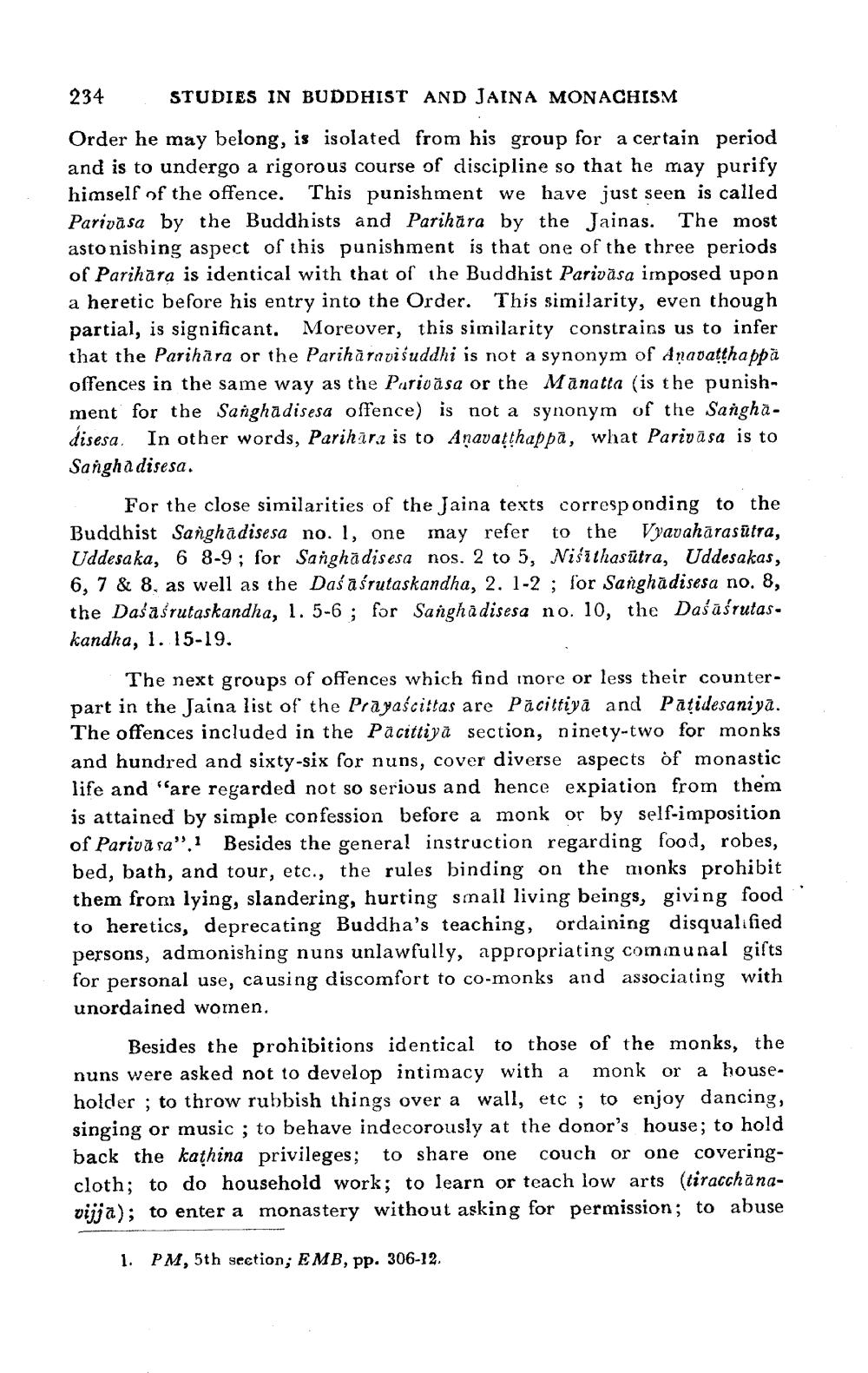________________
234
STUDIES IN BUDDHIST AND JAINA MONACHISM
Order he may belong, is isolated from his group for a certain period and is to undergo a rigorous course of discipline so that he may purify himself of the offence. This punishment we have just seen is called Parivasa by the Buddhists and Parihara by the Jainas. The most astonishing aspect of this punishment is that one of the three periods of Parihara is identical with that of the Buddhist Parivasa imposed upon a heretic before his entry into the Order. This similarity, even though partial, is significant. Moreover, this similarity constrains us to infer that the Parihara or the Pariharaviśuddhi is not a synonym of Anavatthappa offences in the same way as the Parivasa or the Manatta (is the punishment for the Sangha disesa offence) is not a synonym of the Sanghadisesa. In other words, Parihara is to Anavaṭṭhappa, what Parivasa is to Sangha disesa.
For the close similarities of the Jaina texts corresponding to the Buddhist Sangha disesa no. 1, one may refer to the Vyavahārasūtra, Uddesaka, 6 8-9; for Sangha disesa nos. 2 to 5, Nisithasutra, Uddesakas, 6, 7 & 8. as well as the Dasa śrutaskandha, 2. 1-2; for Sanghadisesa no. 8, the Dasasrutaskandha, 1. 5-6; for Sangha disesa no. 10, the Dasaśrutaskandha, 1. 15-19.
The next groups of offences which find more or less their counterpart in the Jaina list of the Prayaścittas are Pacittiya and Patidesaniya. The offences included in the Pacittiya section, ninety-two for monks and hundred and sixty-six for nuns, cover diverse aspects of monastic life and "are regarded not so serious and hence expiation from them is attained by simple confession before a monk or by self-imposition of Parivasa". Besides the general instruction regarding food, robes, bed, bath, and tour, etc., the rules binding on the monks prohibit them from lying, slandering, hurting small living beings, giving food to heretics, deprecating Buddha's teaching, ordaining disqualified persons, admonishing nuns unlawfully, appropriating communal gifts for personal use, causing discomfort to co-monks and associating with unordained women.
Besides the prohibitions identical to those of the monks, the nuns were asked not to develop intimacy with a monk or a householder; to throw rubbish things over a wall, etc; to enjoy dancing, singing or music; to behave indecorously at the donor's house; to hold back the kathina privileges; to share one couch or one coveringcloth; to do household work; to learn or teach low arts (tiracchanavijja); to enter a monastery without asking for permission; to abuse
1. PM, 5th section; EMB, pp. 306-12.




